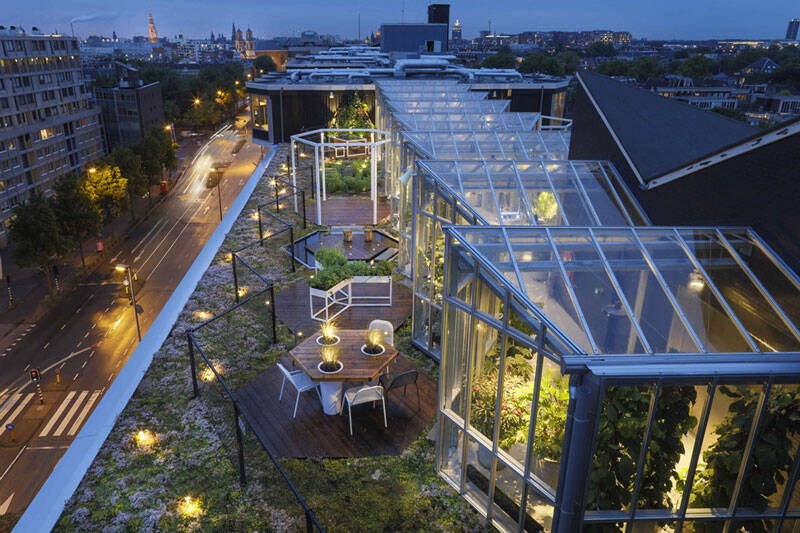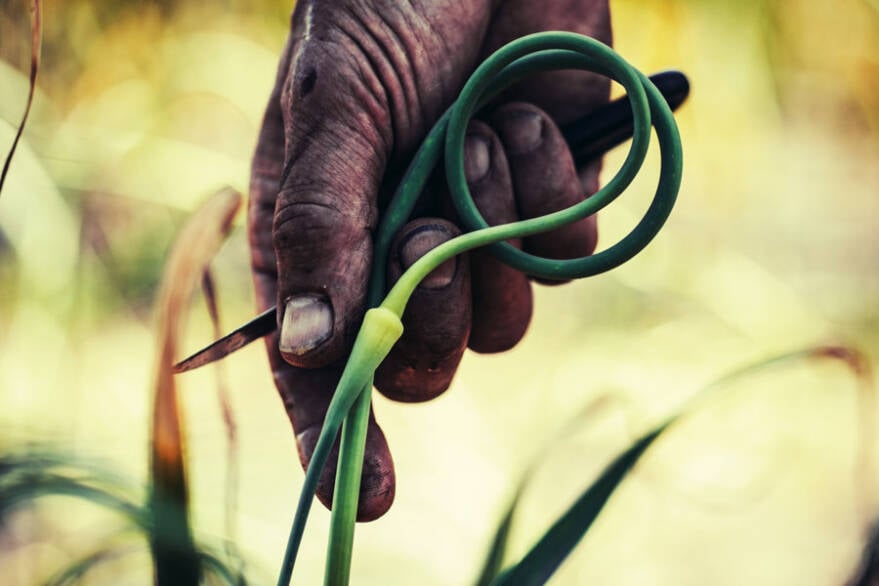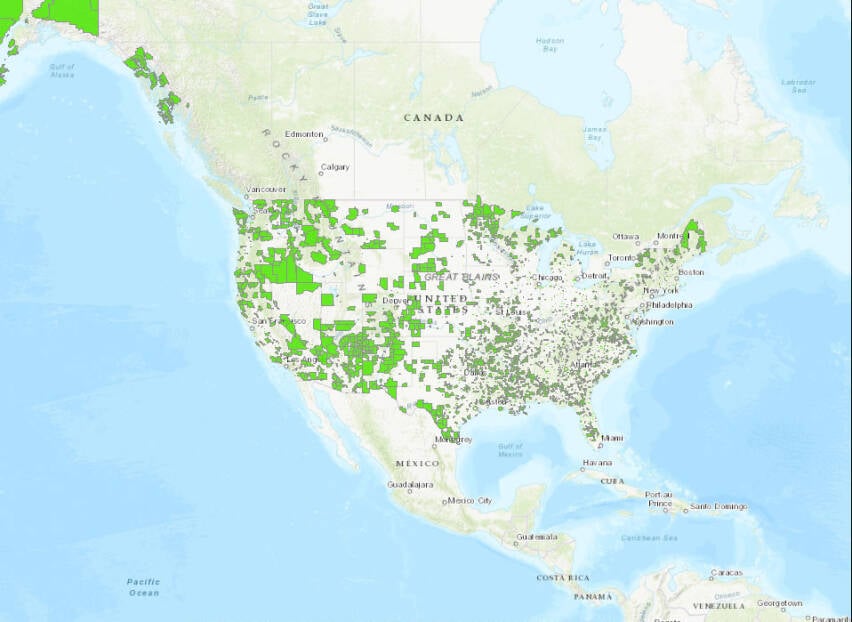@ Nina Slagmolen
looking
for solutions
Eliminating food deserts will require structural change in not just the way we build our food system in the post-COVID age, but in the way we build society itself. 2020 has shone a bleak light on systemic social and economic issues, but also provided some sparks of hope for the future.
On a slightly larger scale we find initiatives like Wholesome Wave. They are fighting nutrition insecurity across the United States by developing and deploying programs, platforms, and seed funding to help community organizations. They are leading by example by in effect using private funds to show what could be if public funds were perhaps spent differently. One example of a program they fund is doubling the SNAP funding for individuals in need. Those relying on food stamps spend 100 billion a year on food, but are often priced out of healthy options. This program allows easier access to far healthier food for those that need it most.
Food deserts have been on the radar of local governments for a long time as well. New York City started its Green Carts Initiative in 2008. Through it, the local mobile food infrastructure in the form of the city’s famous food carts is employed to bring healthy food to underserved areas. The program started by releasing a thousand new vendor permits specifically for healthy food. The program has been successful, with 71 percent of Green Cart customers reporting an increased intake of fruit and vegetables (as of 2014), with 63 percent indicating they use Green Carts at least once a week. As an added bonus, supermarkets and stores in areas served by Green Carts have started stocking more fresh produce to serve their new customer base.

Garden Nighttime Zoku

Looking for solutions
So what can be done about it? Three solutions:
Community gardens are one of the most effective ways to effect small scale change. Especially in times of crisis. Growing your own food is the most local solution out there. But not everyone has the means or space for it. That’s where community gardens come in. People like Ron Finley have been growing for years. He started the Ron Finley Project to bring community gardens and the education needed to use them well to communities around the nation. Vacant lots or unused tracts of land can be transformed into a farm growing fresh food, and jobs to go with it. The problem isn’t new, Finley gave a TED Talk about it back in 2013, but the need for those lessons is more acute than ever.

More than a food problem
Food deserts are at a crossroads of several systemic problems. Not only has the food system proven to be in dire need of resilience, and not only have diet related diseases proven to worsen an already terrible public health crisis. To many, food deserts are a creation of long standing social injustices, disproportionately affecting low income, black communities. The term itself has come under siege, with some activists prefering ‘food apartheid’ to in their eyes better indicate the endemic racist aspect of food inequality. Solving food deserts means having to solve all three of these structural problems, a monumental challenge, but a necessary one.
© Rahi Rezvani

Food deserts have been a recognized public health problem for some time now. Diet related diseases like obesity and diabetes have reached epidemic levels, and realizing affordable access to healthy food for everyone is one of the main ways to fight the continued rise of those ailments. The COVID-19 pandemic, however, has been top of mind for most of the year, and shone a spotlight on the weaknesses of the global food system. Food insecurity has grown as a result. In some areas like New Orleans and Baton Rouge approximately 65 percent of residents live in food insecure areas, according to analysis by Urban Footprint.
What is a food desert?
Food deserts can be described as geographic areas where residents have severely limited or nonexistent access to affordable healthy food, in particular fresh food and vegetables. The direct cause is usually ascribed to a lack of grocery stores within convenient travel distance, but the underlying issues include myriad socio-economic factors. Communities in food deserts are often low income, with a poverty rate greater than 20 percent. They may have limited transportation options, making even a 10 mile trip nearly impossible. On the supply side available food offerings could be limited to ultra processed options or convenient but unhealthy options. The areas could also be a literal desert or untamed wilderness with no fertile land available for farming and few local producers as a result. According to the latest data from the USDA, 39 million people live in these ‘low income, low access’ areas in the United States alone. The COVID-19 pandemic has exacerbated food insecurity nationwide, and has made the problem more prevalent in urban and rural areas alike. There are hundreds of food deserts in the United States, as shown on this map.


food deserts
WHAT TO DO WHEN THERE IS NO LOCAL?
Jelle Steenbergen Wouter Noordijk
Relocalization could be an interesting solution for creating food system resilience. But what happens when there is no local to go back to? Around the world and in the United States many areas lack access to affordable healthy food. Disrupting the supply chain will do little to solve the problems these food deserts face. What can be done to something where there is nothing?
trendwatch
4 min
food deserts what to do when there is no local?

@ Nina Slagmolen
Eliminating food deserts will require structural change in not just the way we build our food system in the post-COVID age, but in the way we build society itself. 2020 has shone a bleak light on systemic social and economic issues, but also provided some sparks of hope for the future.
Garden Nighttime Zoku
On a slightly larger scale we find initiatives like Wholesome Wave. They are fighting nutrition insecurity across the United States by developing and deploying programs, platforms, and seed funding to help community organizations. They are leading by example by in effect using private funds to show what could be if public funds were perhaps spent differently. One example of a program they fund is doubling the SNAP funding for individuals in need. Those relying on food stamps spend 100 billion a year on food, but are often priced out of healthy options. This program allows easier access to far healthier food for those that need it most.
Food deserts have been on the radar of local governments for a long time as well. New York City started its Green Carts Initiative in 2008. Through it, the local mobile food infrastructure in the form of the city’s famous food carts is employed to bring healthy food to underserved areas. The program started by releasing a thousand new vendor permits specifically for healthy food. The program has been successful, with 71 percent of Green Cart customers reporting an increased intake of fruit and vegetables (as of 2014), with 63 percent indicating they use Green Carts at least once a week. As an added bonus, supermarkets and stores in areas served by Green Carts have started stocking more fresh produce to serve their new customer base.


Looking for solutions
So what can be done about it? Three solutions:
Community gardens are one of the most effective ways to effect small scale change. Especially in times of crisis. Growing your own food is the most local solution out there. But not everyone has the means or space for it. That’s where community gardens come in. People like Ron Finley have been growing for years. He started the Ron Finley Project to bring community gardens and the education needed to use them well to communities around the nation. Vacant lots or unused tracts of land can be transformed into a farm growing fresh food, and jobs to go with it. The problem isn’t new, Finley gave a TED Talk about it back in 2013, but the need for those lessons is more acute than ever.
© Rahi Rezvani
More than a food problem
Food deserts are at a crossroads of several systemic problems. Not only has the food system proven to be in dire need of resilience, and not only have diet related diseases proven to worsen an already terrible public health crisis. To many, food deserts are a creation of long standing social injustices, disproportionately affecting low income, black communities. The term itself has come under siege, with some activists prefering ‘food apartheid’ to in their eyes better indicate the endemic racist aspect of food inequality. Solving food deserts means having to solve all three of these structural problems, a monumental challenge, but a necessary one.

Food deserts have been a recognized public health problem for some time now. Diet related diseases like obesity and diabetes have reached epidemic levels, and realizing affordable access to healthy food for everyone is one of the main ways to fight the continued rise of those ailments. The COVID-19 pandemic, however, has been top of mind for most of the year, and shone a spotlight on the weaknesses of the global food system. Food insecurity has grown as a result. In some areas like New Orleans and Baton Rouge approximately 65 percent of residents live in food insecure areas, according to analysis by Urban Footprint.

What is a food desert?
Food deserts can be described as geographic areas where residents have severely limited or nonexistent access to affordable healthy food, in particular fresh food and vegetables. The direct cause is usually ascribed to a lack of grocery stores within convenient travel distance, but the underlying issues include myriad socio-economic factors. Communities in food deserts are often low income, with a poverty rate greater than 20 percent. They may have limited transportation options, making even a 10 mile trip nearly impossible. On the supply side available food offerings could be limited to ultra processed options or convenient but unhealthy options. The areas could also be a literal desert or untamed wilderness with no fertile land available for farming and few local producers as a result. According to the latest data from the USDA, 39 million people live in these ‘low income, low access’ areas in the United States alone. The COVID-19 pandemic has exacerbated food insecurity nationwide, and has made the problem more prevalent in urban and rural areas alike. There are hundreds of food deserts in the United States, as shown on this map.

WHAT TO DO WHEN THERE IS NO LOCAL?
food deserts
Jelle Steenbergen Wouter Noordijk
Relocalization could be an interesting solution for creating food system resilience. But what happens when there is no local to go back to? Around the world and in the United States many areas lack access to affordable healthy food. Disrupting the supply chain will do little to solve the problems these food deserts face. What can be done to something where there is nothing?
4 min









